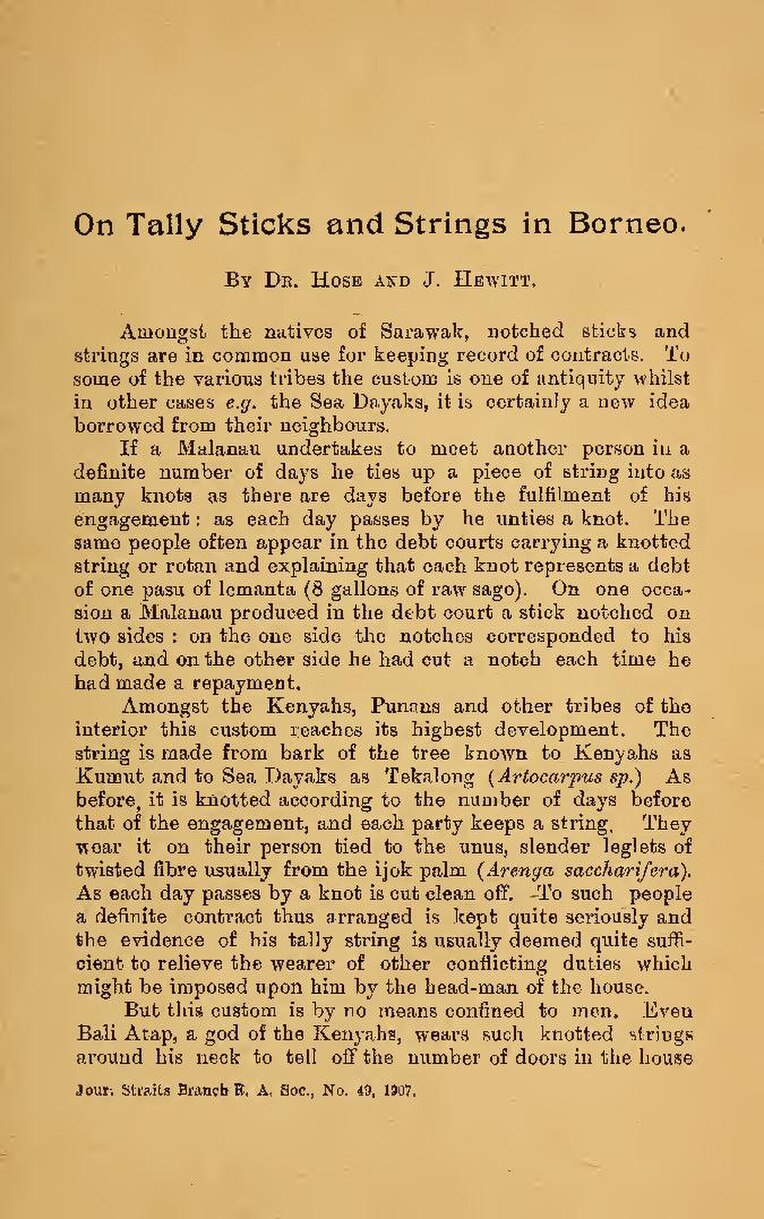On Tally Sticks and Strings in Borneo.
By DR. HOSE AND J. HEWITT.
Amongst the natives of Sarawak, notched sticks and strings are in common use for keeping record of contracts. To some of the various tribes the custom is one of antiquity whilst in other cases e.g. the Sea Dayaks, it is certainly a new idea borrowed from their neighbours.
If a Malanau undertakes to meet another person in a definite number of days he ties up a piece of string into as many knots as there are days before the fulfilment of his engagement as each day passes by he unties a knot. The same people often appear in the debt courts carrying a knotted string or rotan and explaining that each knot represents a debt of one pasu of lemanta (8 gallons of raw sago). On one occa- sion a Malanau produced in the debt court a stick notched on two sides on the one side the notches corresponded to his debt, and on the other side he had cut a notch each time he had made a repayment.
Amongst the Kenyahs, Punans and other tribes of the interior this custom reaches its highest development. The string is made from bark of the tree known to Kenyahs as Kumut and to Sea Dayaks as Tekalong (Artocarpus sp.) As before, it is knotted according to the number of days before that of the engagement, and each party keeps a string. They wear it on their person tied to the unus, slender leglets of twisted fibre usually from the ijok palm (Arenga saccharifera). As each day passes by a knot is cut clean off. To such people a definite contract thus arranged is kept quite seriously and the evidence of his tally string is usually deemed quite suff- cient to relieve the wearer of other conflicting duties which might be imposed upon him by the head-man of the house.
But this custom is by no means confined to men. Even Bali Atap, a god of the Kenyahs, wears such knotted strings around his neck to tell off the number of doors in the house
